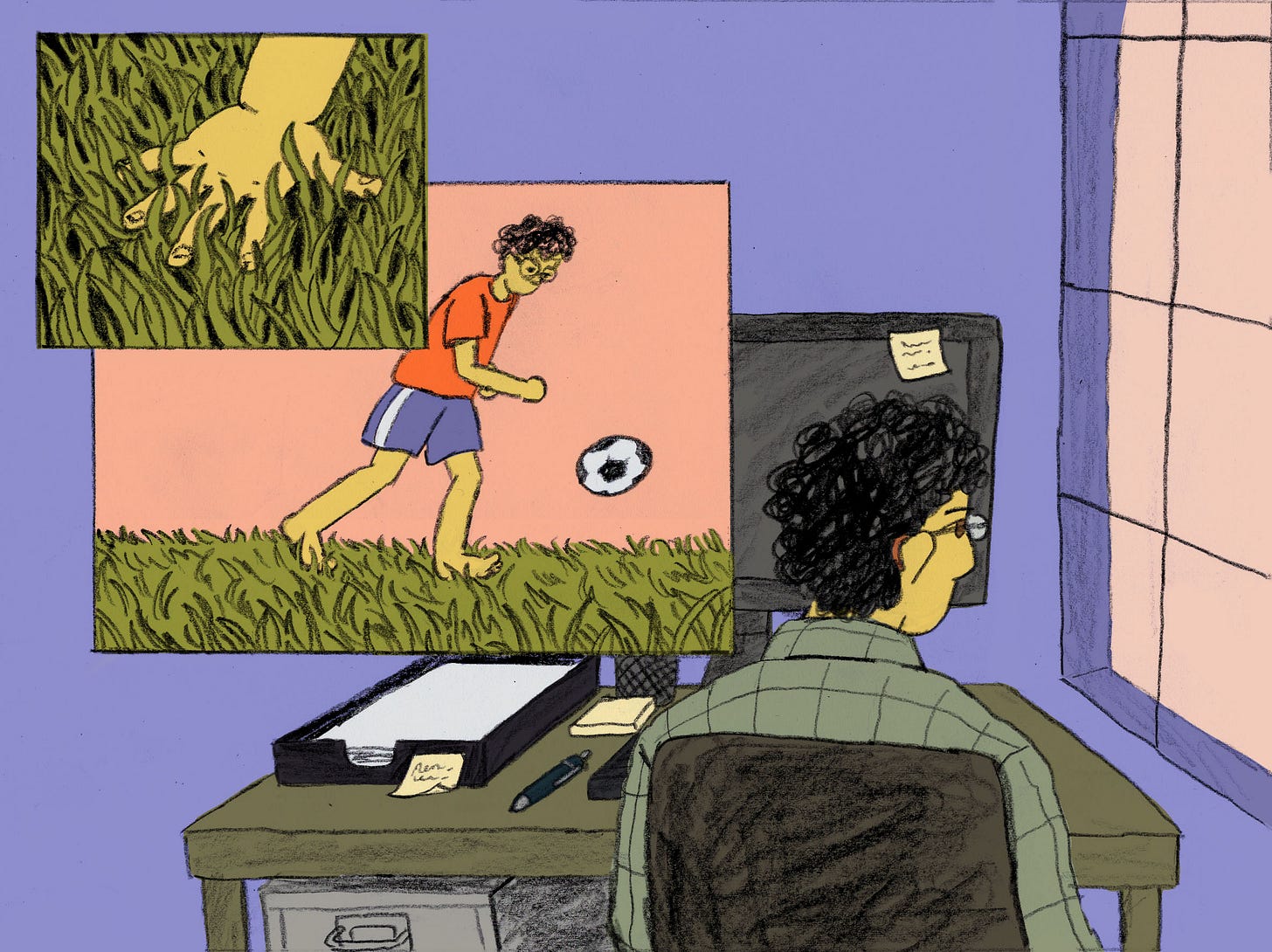The multi-store model of memory
Memory
Hey all,
Welcome to Human Nature, the illustrated psychology newsletter.
This month’s theme is memory. In cognitive psychology, memory refers to the processes involved in the encoding, storage and retrieval of information. Memory is central to our understanding of the world. Without a recollection of the past, we can’t make sense of the present or make decisions about the future.
Over the next few weeks, we will explore how memory works, why we forget certain things while remembering others clearly, false memories, and more.
The multi-store model of memory
What it is: The multi-store model of memory is one of the first proposed models of memory and is still referred to by psychologists today. It suggests that information is retained in three stores: sensory, short-term and long-term, and moves through these stores in a linear fashion in order to be encoded into our long-term memory.
How it was discovered: In 1968, Atkinson and Shiffrin proposed the multi-store model of memory. The model was the synthesis of the two researchers’ work based on the prevalent theories and findings in their field at the time.
How it works: Information is first received through our senses: vision, hearing, taste, touch or smell. However, only the sensory information that we pay attention to moves into our short-term memory.
Short-term memory (STM) is limited in duration and storage capacity. We can only retain 7 (+/- 2) chunks of information in our STM on average (see: Miller’s magic number).
Information only moves to long-term memory (LTM) through rehearsal. The duration and capacity of LTM are potentially limitless. We can remember childhood memories in our old age. Our ability to recall information depends on the quality of processing during the three stages of memory: encoding, storage and retrieval.
Thank you for reading, see you next time!
Sources:
Human memory: A proposed system and its control processes. (Atkinson & Shiffrin, 1968).



